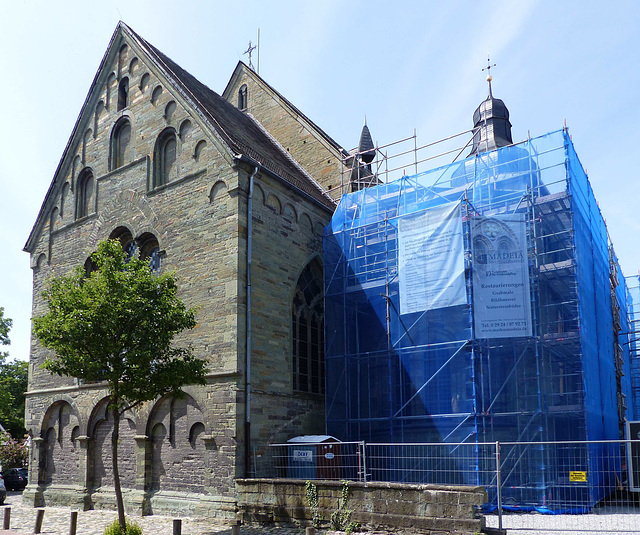Soest - Hohnekirche
Soest - Hohnekirche
Soest - Hohnekirche
Soest - Hohnekirche
Soest - Hohnekirche
Soest - Hohnekirche
Soest - Hohnekirche
Soest - Hohnekirche
Soest - Hohnekirche
Soest - Hohnekirche
Soest - Hohnekirche
Soest - Hohnekirche
Soest - Hohnekirche (PiP)
Soest - Hohnekirche
Soest - Hohnekirche
Location
Lat, Lng:
Lat, Lng:
You can copy the above to your favourite mapping app.
Address: unknown
Lat, Lng:
You can copy the above to your favourite mapping app.
Address: unknown
See also...
Keywords
Authorizations, license
-
Visible by: Everyone -
All rights reserved
-
264 visits
Soest - Hohnekirche


With a population of about 10.000 Soest was the most important town in Westphalia within the 11th and 12th century.
The "Soester Stadtrecht" ("Soest city law") is the oldest city law, documented in German territory. Soest was one of the most important Hanseatic cities in medieval times. During the "Soester Fehde" ("Soest Feud") it liberated itself from the Bishop of Cologne, who controlled Westphalia.
During and after the Thirty Years' War, Soest suffered a tremendous loss population and influence. At the lowest point in 1756, it had only 3,600 citizens.
Soest has still a couple of wonderful medieval, Romanesque churches, built with the regional greenish sandstone. The "Hohnekirche" (officially "St. Maria zur Höhe") is one of them. The church was built in its present form from 1180 and is one of the oldest hall churches in Westphalia. It replaced an older church here.
"St. Maria zur Höhe" in Soest is a pretty unique church. A kind of treasure-box, just about 200 m apart and shadowed by the better known "Wiesenkirche". Such a church needs constant renovation, so friends' association "Verein zur Erhaltung der Hohnekirche e. V." was founded in 1982 to support the efforts.
The association has a nice website (in German) with valuable informations.
www.foerderverein-hohnekirche.de/index.php
The "Soester Stadtrecht" ("Soest city law") is the oldest city law, documented in German territory. Soest was one of the most important Hanseatic cities in medieval times. During the "Soester Fehde" ("Soest Feud") it liberated itself from the Bishop of Cologne, who controlled Westphalia.
During and after the Thirty Years' War, Soest suffered a tremendous loss population and influence. At the lowest point in 1756, it had only 3,600 citizens.
Soest has still a couple of wonderful medieval, Romanesque churches, built with the regional greenish sandstone. The "Hohnekirche" (officially "St. Maria zur Höhe") is one of them. The church was built in its present form from 1180 and is one of the oldest hall churches in Westphalia. It replaced an older church here.
"St. Maria zur Höhe" in Soest is a pretty unique church. A kind of treasure-box, just about 200 m apart and shadowed by the better known "Wiesenkirche". Such a church needs constant renovation, so friends' association "Verein zur Erhaltung der Hohnekirche e. V." was founded in 1982 to support the efforts.
The association has a nice website (in German) with valuable informations.
www.foerderverein-hohnekirche.de/index.php
aNNa schramm has particularly liked this photo
- Keyboard shortcuts:
Jump to top
RSS feed- Latest comments - Subscribe to the comment feeds of this photo
- ipernity © 2007-2024
- Help & Contact
|
Club news
|
About ipernity
|
History |
ipernity Club & Prices |
Guide of good conduct
Donate | Group guidelines | Privacy policy | Terms of use | Statutes | In memoria -
Facebook
Twitter

Sign-in to write a comment.